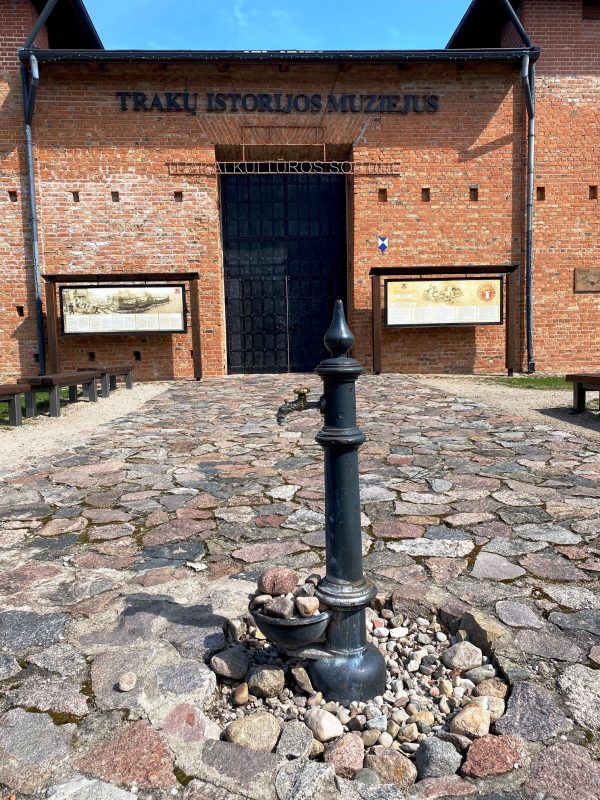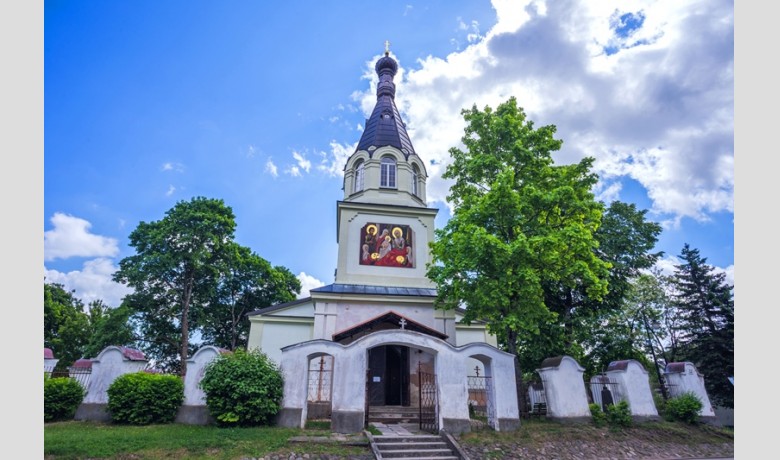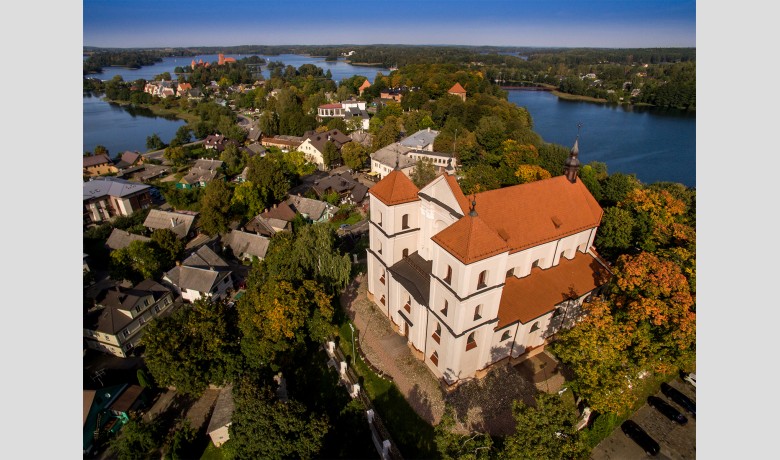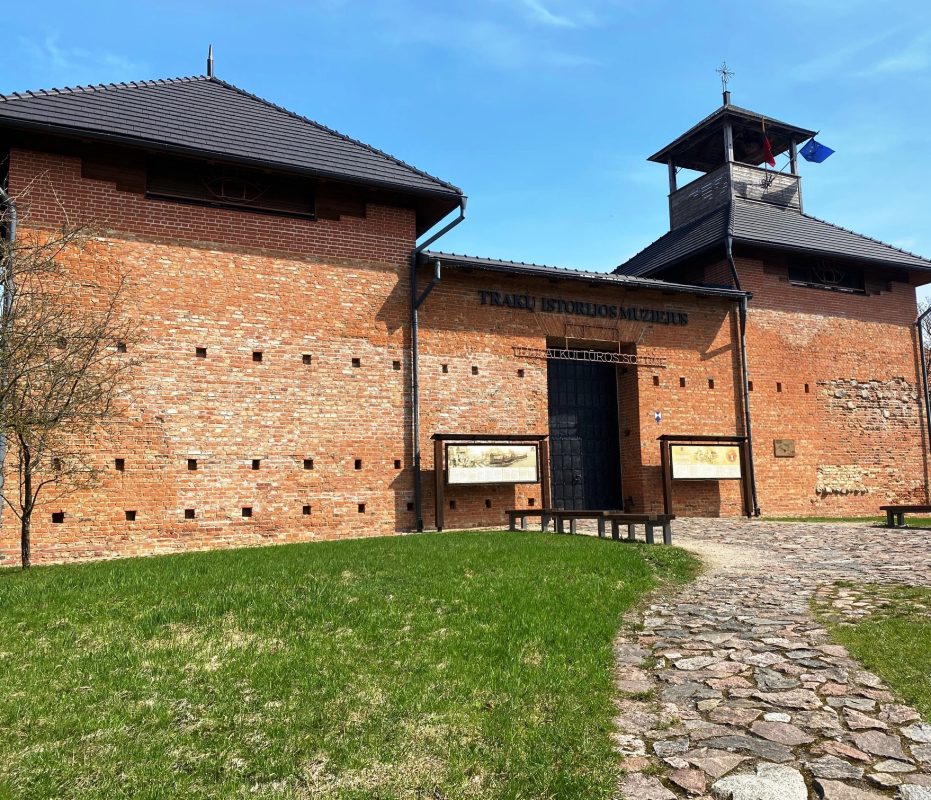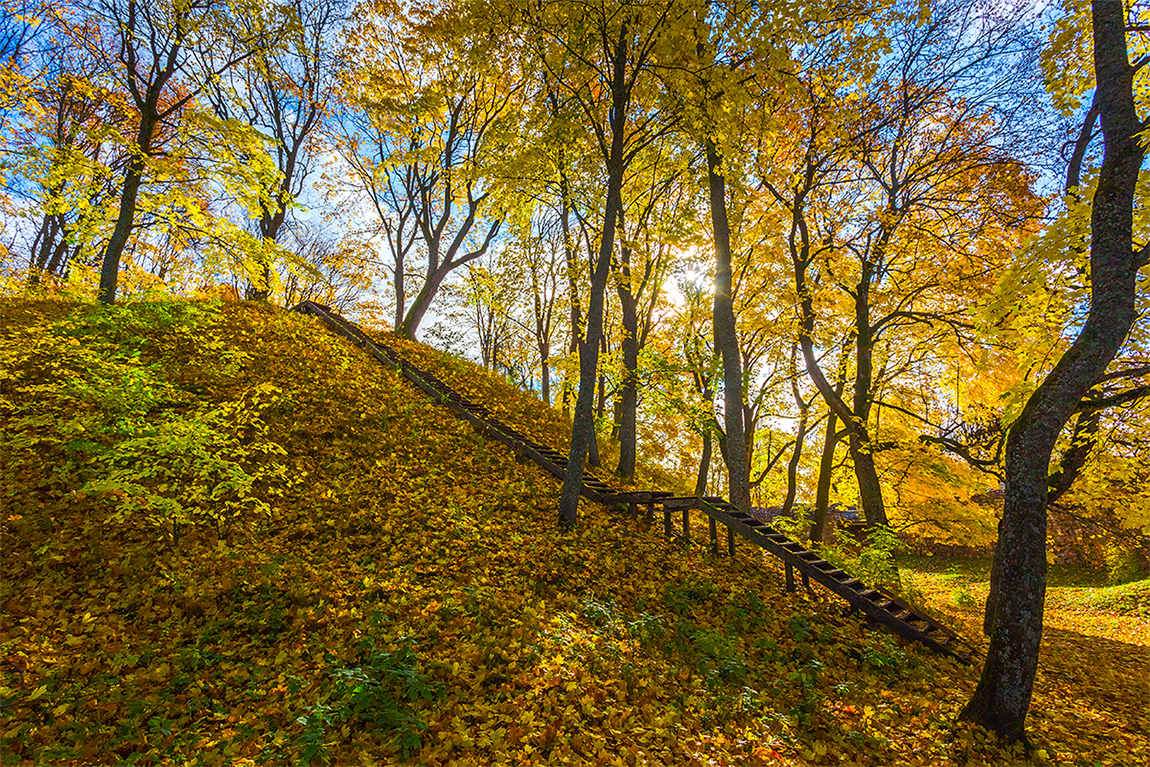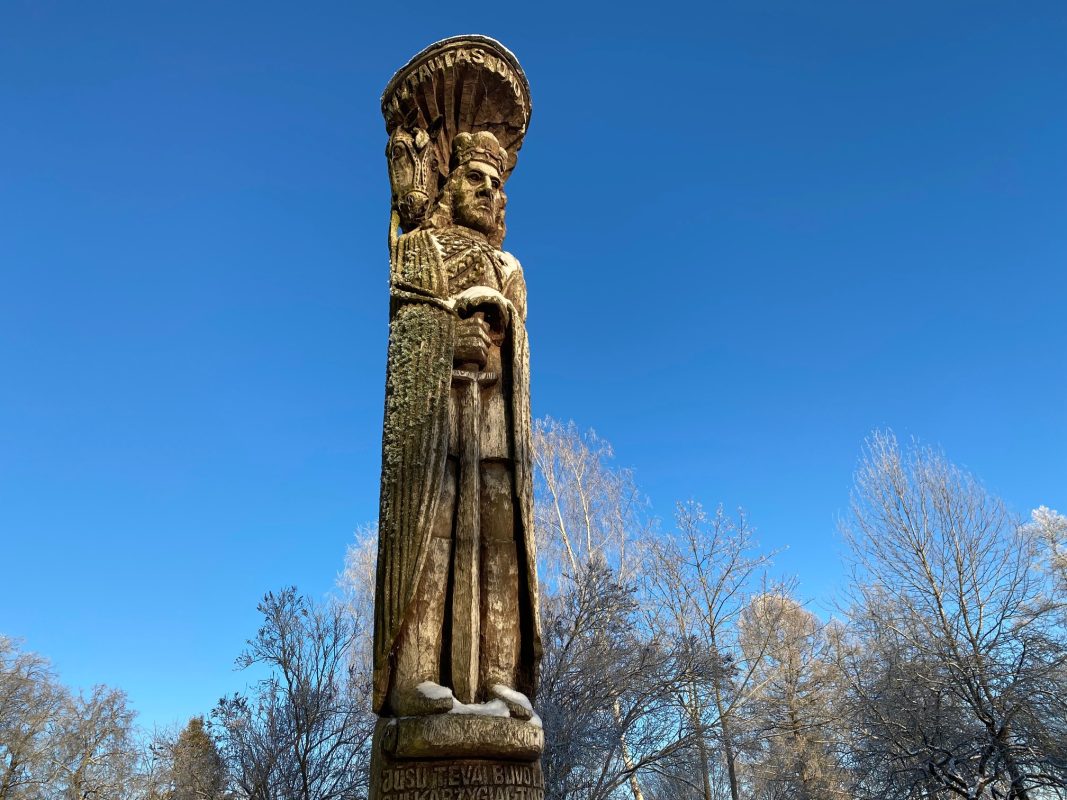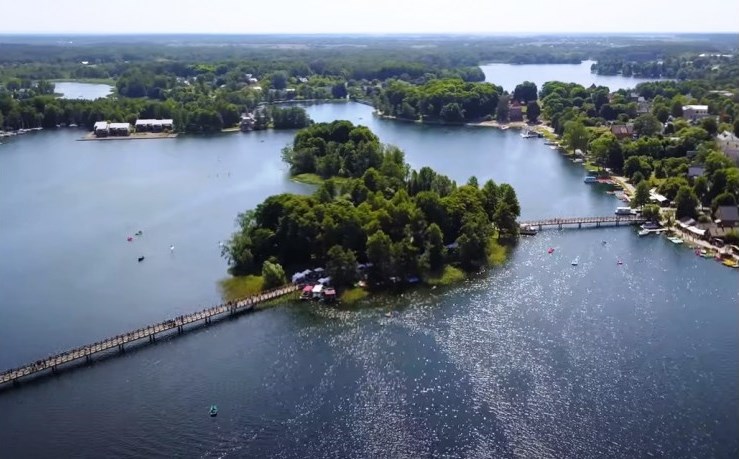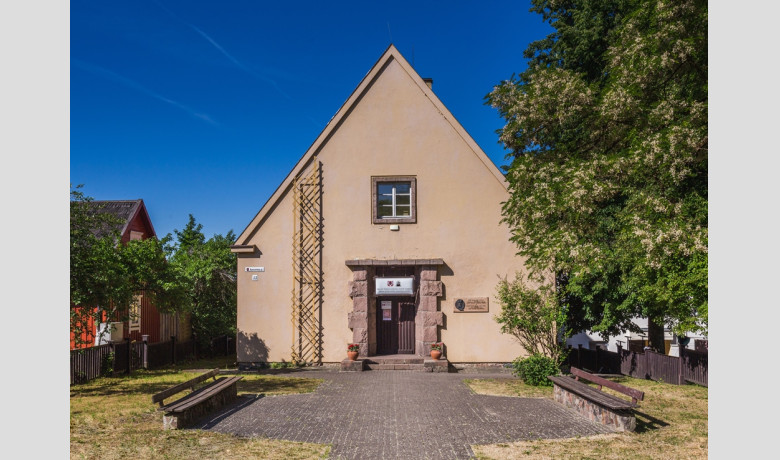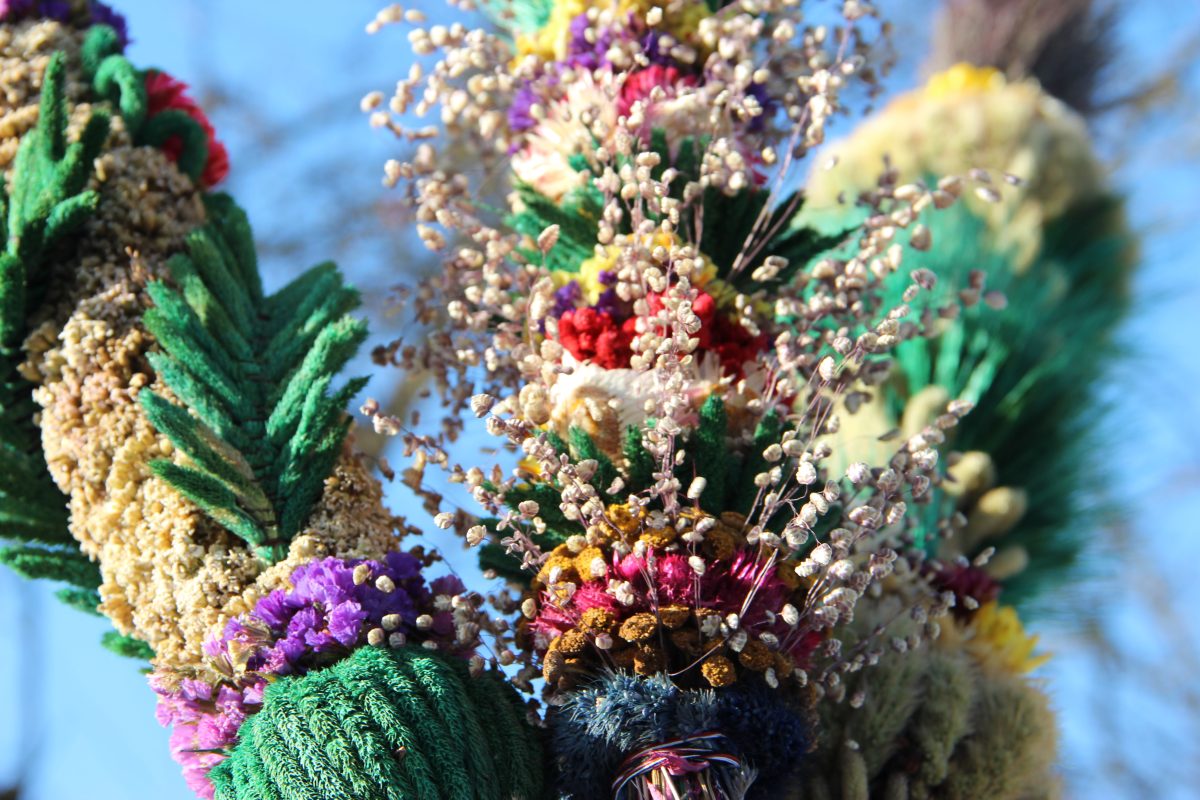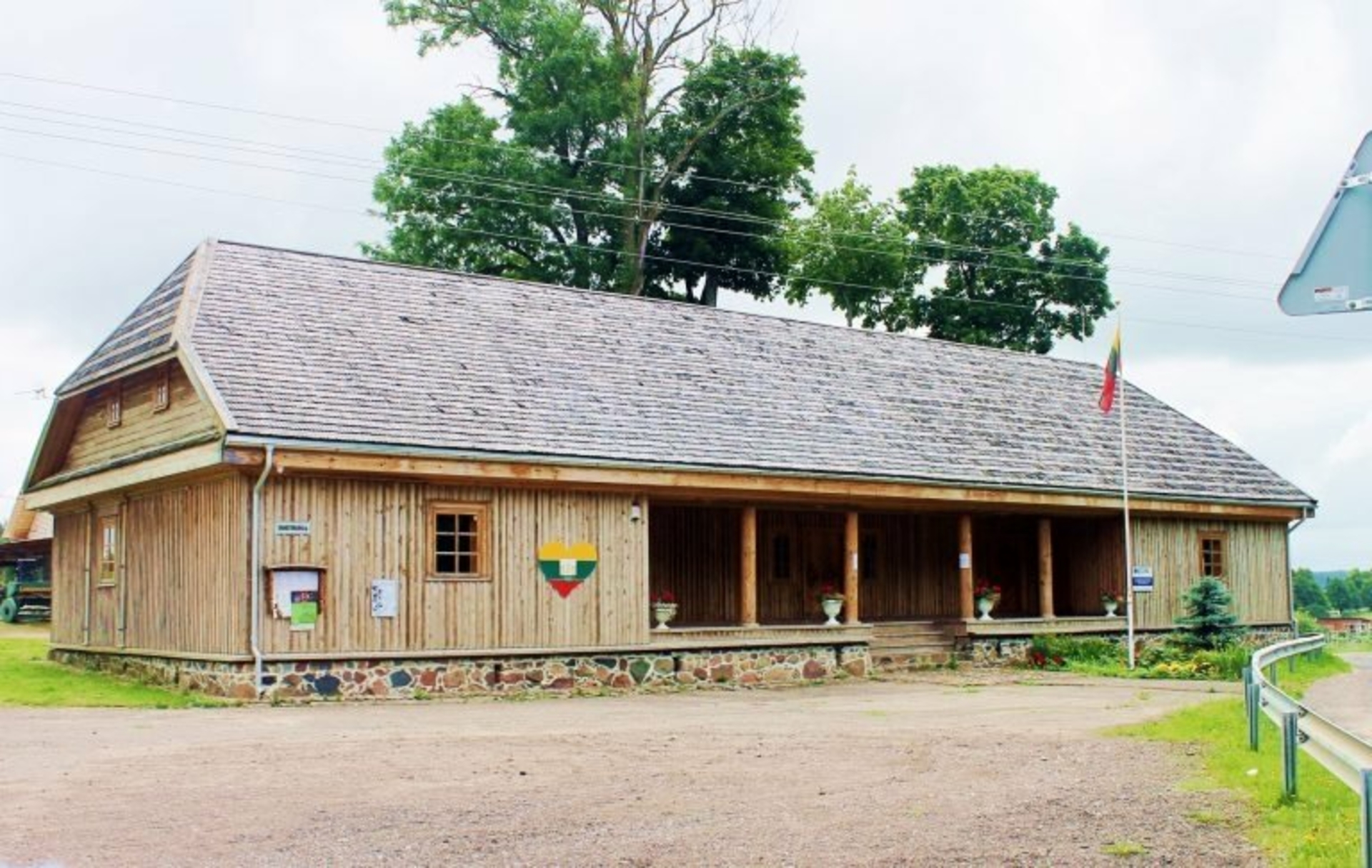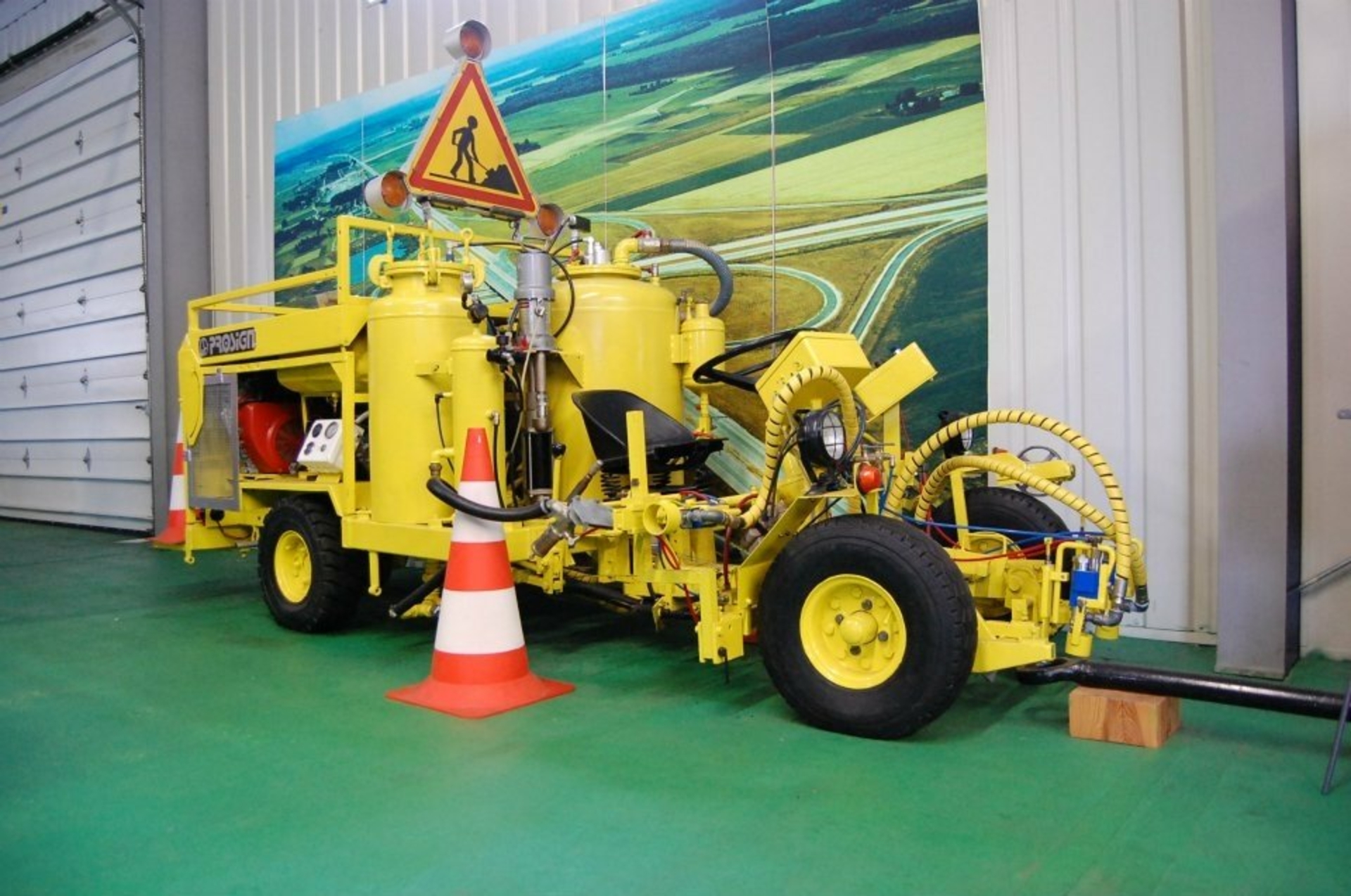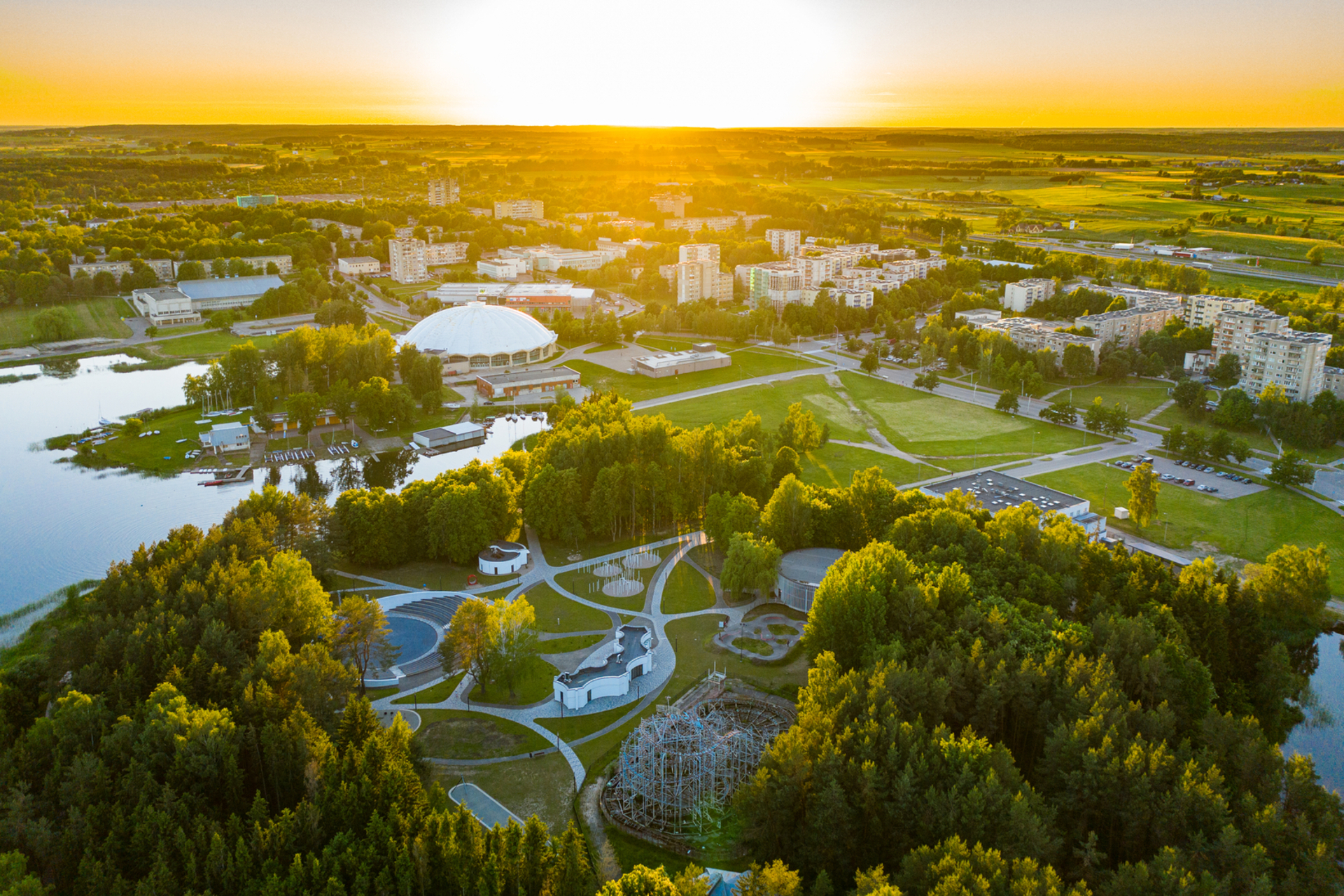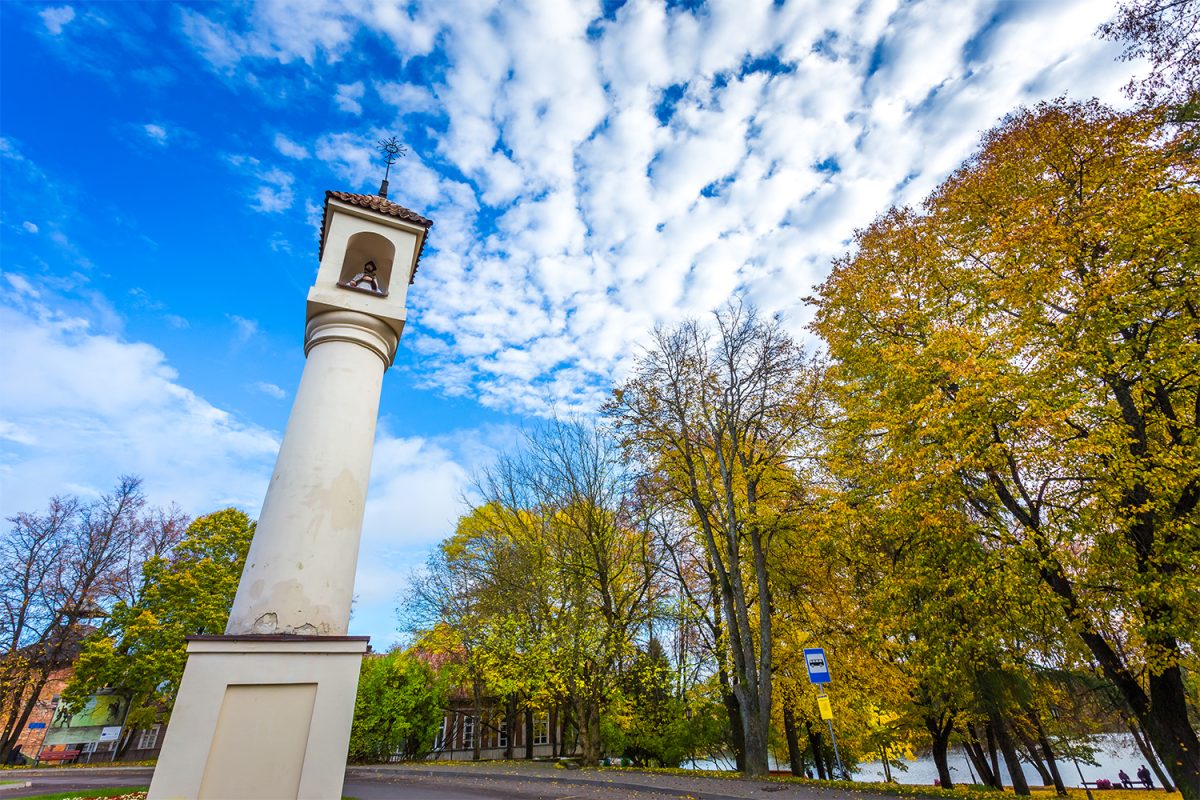The St. John of Nepomuk Chapel Pillar is one of the prominent landmarks of the town of Trakai. This 14-meter-high chapel pillar is located in the heart of Trakai, at the intersection of Karaimų and Vytauto streets, in the center of the former Town Hall Square. Written sources indicate that as early as the mid-17th century, a masonry column with a statue stood here.
The classical-style chapel pillar with the statue of the patron saint of fishermen and water-surrounded towns is an important and revered symbol for the people of Trakai. After the 1863 uprising, the Tsarist government ordered the removal of the saint's statue and offered a significant sum of money for its demolition. It is said that the locals resisted and refused to comply with the Tsar's order. However, one troublemaker grabbed an ax and was about to destroy the statue but fell from the ladder and broke his leg. The head of Trakai police had to summon Cossacks, who eventually tore down the statue.
In 1935, a new statue of St. John of Nepomuk, created by Vilnius sculptor Stanislovas Horn-Poplawski, was placed in the chapel pillar. During the post-war years, the statue faced threats again. This time, zealous atheists removed the wooden statue of Nepomuk from the chapel pillar and threw it into the lake! Trakai Museum staff, upon learning of this, retrieved the statue from the depths of the lake and kept it in the museum's storerooms. Instead of the saint's statue, four clocks were installed on the column, but they soon malfunctioned and began showing different times.
Today, the chapel pillar houses a restored statue of St. John of Nepomuk. In 1990, the image of Trakai's patron saint was honorably returned to its original place.
Legends
There are many legends about the St. John of Nepomuk Chapel Pillar. One tells that in the 18th century, while sailing on Lake Galvė, Laurynas Odinecas, the owner of Užutrakis Manor, was caught in a fierce storm and began to sink. Remembering St. Nepomuk, the nobleman fervently prayed to him for help. The storm suddenly calmed down as quickly as it had begun, and the rescued Odinecas, grateful for the saint's grace, erected a statue of him in the Market Square.
Another tale is that when the Tsarist authorities removed the statue from the chapel pillar, the local residents were deeply saddened. It was believed that Lake Galvė would claim a life every spring if St. Nepomuk did not return to the column. Over time, this story evolved to suggest that the lake would not freeze in winter or thaw in spring until it received a human sacrifice.
Life of St. John of Nepomuk
John of Nepomuk was born around 1340 in the Czech Republic, in a small town near Prague called Pomuk (now Nepomuk). He grew up and studied theology and canon law at the universities
of Prague and Padua.
At the age of 40, Nepomuk was ordained as a priest and later appointed canon of St. Vitus Cathedral in Prague, a higher-ranking Catholic clergyman and member of the chapter. Queen Joanna, wife of King Wenceslaus IV of Luxembourg, confessed her sins only to this priest. It is said that King Wenceslaus, suspecting his wife of infidelity, tried to force Nepomuk to reveal the confession secrets. However, the priest refused and thus incurred the king's wrath.
Shortly thereafter, a dispute arose in the kingdom over the church's influence on the state. John of Nepomuk defended the authority of Prague Archbishop Jan of Jenštejn over King Wenceslaus IV, further angering the king. The king ordered the priest's arrest, interrogation, torture, and execution. It is believed that on the night of March 19, 1393, he was bound and thrown from the Charles Bridge into the Vltava River. Therefore, Nepomuk is considered the guardian of bridges and protector from water disasters.
Over time, he came to be venerated as a martyr and defender of confession secrets. In 1721, Pope Innocent XIII beatified John of Nepomuk, and in 1729, Pope Benedict XIII canonized him as a saint.
Patron of Trakai
In the late 18th century, the Jesuits brought the cult of St. John of Nepomuk from the Czech Republic to the then Polish-Lithuanian Commonwealth. This name quickly became one of the most well-known and widely revered. Interestingly, the then-ruler Augustus II chose St. John of Nepomuk, alongside St. Stanislaus and St. Casimir, as the state's patron, i.e., the protector or advocate of the state. A brotherhood named after the saint was established in Vilnius, several village churches were named after him, and in the lake-dotted Utena region, chapels dedicated to him can be found. Among the people, he is often simply called Jonelis.
St. John of Nepomuk's day is celebrated on May 16th. He is considered the patron of the Czech Republic, priests, boatmen, rafters, fishermen, millers, sailors, and bridges, protecting against floods and all water disasters. It is believed that St. Nepomuk saves drowning people and all those unjustly accused or condemned. In 1935, this saint was declared the patron of Trakai town.
In Art
In art, St. Nepomuk is often depicted wearing a white surplice or rochet, a white, wide, knee-length liturgical garment worn by higher-ranking clergy – prelates, bishops, or canons. He is often shown holding a book, crucifix, or palm branch, which in Christianity symbolizes martyrdom, spiritual victory over the flesh, or paradise. Another distinctive attribute of St. John of Nepomuk in visual art is a nimbus with five stars. This sign recalls the legend that stars shone above the saint after he was thrown into the Vltava River.





 Entertainment
Entertainment
 Food establishments
Food establishments





























 54.644663, 24.935801
54.644663, 24.935801
 Get directions
Get directions









